It’s a little-known fact that the father of modern fantasy fiction was a farmer’s son from Huntly.
He mentored Lewis Carroll, convincing him to submit Alice in Wonderland for publication.
And without George MacDonald’s writing there might never have been a Gollum or a hobbit, for he was also known to have influenced J R R Tolkien.
Could the Huntly author, directly descended from one of the 120 Clan MacDonalds who managed to escape from the infamous 1692 Glencoe massacre, ever have imagined the Pandora’s box he unleashed upon the world, all the way down to Harry Potter?
J K Rowling’s series has sold more than 600 million copies, with Tolkein’s Lord of the Rings in second place with 150 million copies sold to date and The Hobbit close behind with 142 million.
The appetite for fantasy novels worldwide is huge, and growing year on year.
If he was still alive and could cream off royalties for his influence, George MacDonald, a Victorian Congregational minister, would be a multi-billionaire.
Some of MacDonald’s children’s literature is still in print and much loved —who remembers The Light Princess, The Princess and the Goblin, The Princess and Curdie, or At the Back of the North Wind?
Narnia author C S Lewis said about MacDonald: “I have never concealed the fact that I regarded him as my master; indeed I fancy I have never written a book in which I did not quote from him.”
How Huntly community is celebrating their fantastic fantasy father… and magic of illustrations
MacDonald celebrates the 200th anniversary of his birth this year, and Huntly is determined not to forget him.
Co-ordinated by Orb’s Bookshop, a celebration of George MacDonald in tandem with a Scottish Festival of Illustration is running at No 30 The Square, next to the bookshop.
It’s been set up by children’s author and illustrator Helen Bate, a volunteer at the bookshop.
The festival is in two parts, one telling the story of George MacDonald and no less than 48 of the national and international artists who have illustrated his books over the past 160 years; the second part is a festival of illustration, with a programme of talks, films and engagement for all ages.
Helen is passionate about the place of narrative illustration in our world.
She said: “It’s part of our world since the first cave paintings produced by early humans.
“It can transcend spoken language and the written word and the stories it tells are understood by all nationalities.
“Today pictures are telling us stories more than ever before.
“Illustration and animation fill the internet, books, magazines, TV, cinemas and the screens that both dominate our homes and that we carry around in our pockets.”
But Helen is concerned that we don’t often know who these talented creators are, so they go unrecognised.
She said: “With so much illustration out there, and as computers are learning to communicate without any human intervention, it’s becoming increasingly important to recognise what stories we are being told, and by whom.”
George MacDonald’s writing attracted world-famous illustrators to bring his work to life
George MacDonald’s work attracted illustrations by artists of the highest standing, including EH Shephard, famous for his endearing Winnie the Pooh drawings, and Maurice Sendak, beloved for Where The Wild Things Are.
They both worked on the books in reprints during the 1960s.
Sendak illustrated The Light Princess, while Shephard illustrated At the Back of the North Wind.
Helen said: “The Victorian style of MacDonald’s writing is less accessible in the 21st century, but the work of his illustrators between the 1860’s and today, offers every generation a new way to discover his stories.
“By focusing on 48 of the artists who have brought his words to life with their illustrations, this celebration clearly shows that George MacDonald’s writing is still influencing artists, even today.”
How did George MacDonald become the father of fantasy in the first place?
MacDonald grew up in an erudite family full of writers, linguists and academics..
His maternal uncle Mackintosh MacKay was a Celtic scholar and collector of fairy tales.
His paternal grandfather supported the publication of James Macpherson’s epic poem Ossian, based on Celtic mythology.
Another uncle was a Shakespeare scholar, and a cousin was a Celtic academic.
His mother had received a classical education, learning multiple languages.
Growing up in the Congregational Church was part of the Christian influence he brought to his writing, notions of good and evil, right and wrong, and redemption through universal love.
He gained a bursary at King’s College Aberdeen, and graduated with a degree in chemistry and physics in 1845.
His first thought was to take up a medical career, but it appears lack of money scuppered this path, and he embarked on training for the Congregational ministry.
When he put his own spin on theology in his sermons, his pay was cut in half and, suffering from ill health, he eventually left the ministry.
This was all to literature’s gain, and in the 1860s he began to meet with considerable success for his fantasy novels and fairy tales.
He caused quite a stir in the United States when he embarked on a literary lecture tour there in the 1870s, attracting crowds of 3,000 in Boston.
MacDonald didn’t only write fantasy.
His novels, such as David Elginbrod and Alec Forbes were among the first in a style known as the ‘kailyard school’ of Scottish writing.
But despite the Celtic literary influences in his life, MacDonald didn’t write any of his fantasy work in this country.
Plagued by ill health, he, his wife Louisa and their large family —11 children—lived in Bordighera, Liguria, Italy from the 1880s for 20 years.
There he made another literary mark, founding a literary studio known as Casa Coraggio, one of the most respected cultural centres of the time.
In old age, he returned to England, and died in Ashtead, Surrey.
His ashes were buried in Bordighera, alongside Louisa and daughters Lilia and Grace.
Huntly’s town slogan comes from MacDonald’s poetry
MacDonald’s influence, quietened by the passage of two centuries, still manifests in different ways.
Huntly’s ubiquitous slogan, Room to Roam is from one of MacDonald’s poems, from his 1858 work Phantastes.
Celtic folk-rock band The Waterboys named one of their albums Room To Roam, with the hope of turning the title track into a ‘town anthem’ for Huntly.
Huntly Festival of Illustration has attracted many top-notch illustrators to take part in the events programme, including Andrew Barr, Simon P Biggs, Eileen Budd, Ross Collins, Tom Foster, Aaron Gale, Jonathan Gibbs, Tom Humberstone, Kate Leiper, Meg McLaren, Tom Morgan-Jones, and Sean Wilson who is doing an on-line event from Japan on Manga for the Gordon Schools.
Helen said: “The illustration festival has created loads of enthusiasm around the stories and illustrators of George MacDonald and also book illustration generally, especially from the local primary schools and almost all the local children are coming in school groups to see the exhibitions and take part in artist’s events.
“Children have been busy drawing princesses and goblins for a competition, and there has been a monster hunt around Huntly organised by Orb’s Community Bookshop.
“Some older students from the Gordon Schools have been making shadow puppets and marionettes based on the same theme from MacDonald’s stories. These are all being exhibited at the festival.”
The event runs at No 30 The Square, Huntly until September 9.
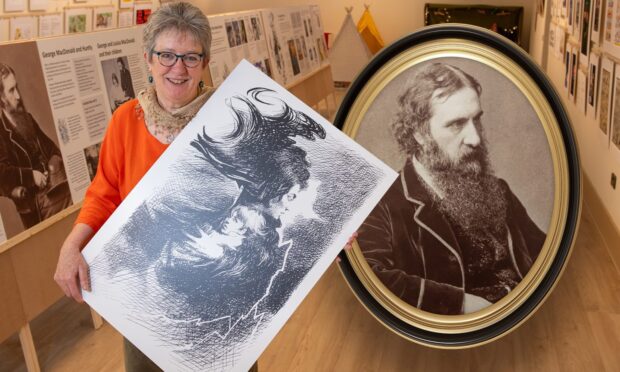
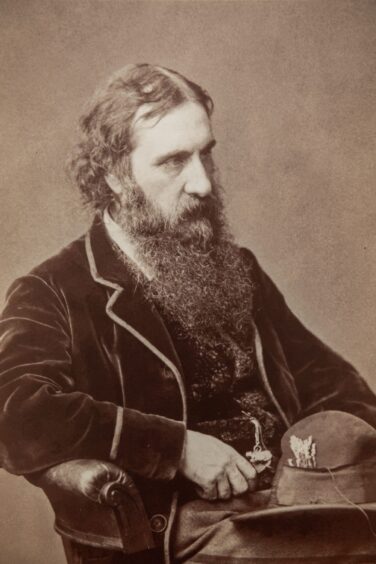
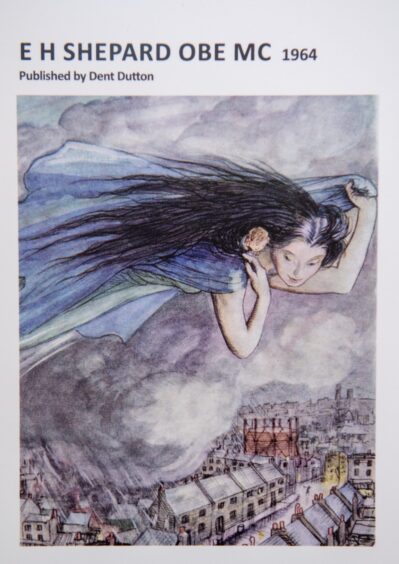
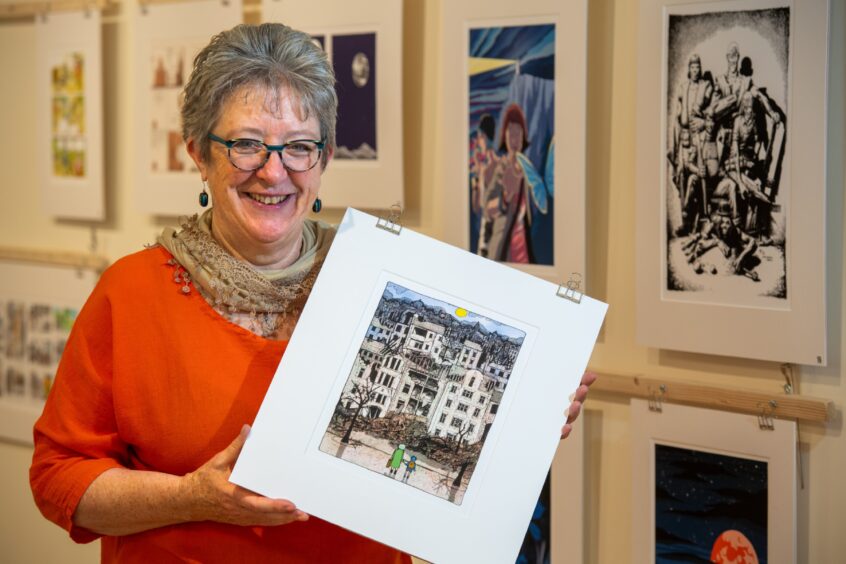
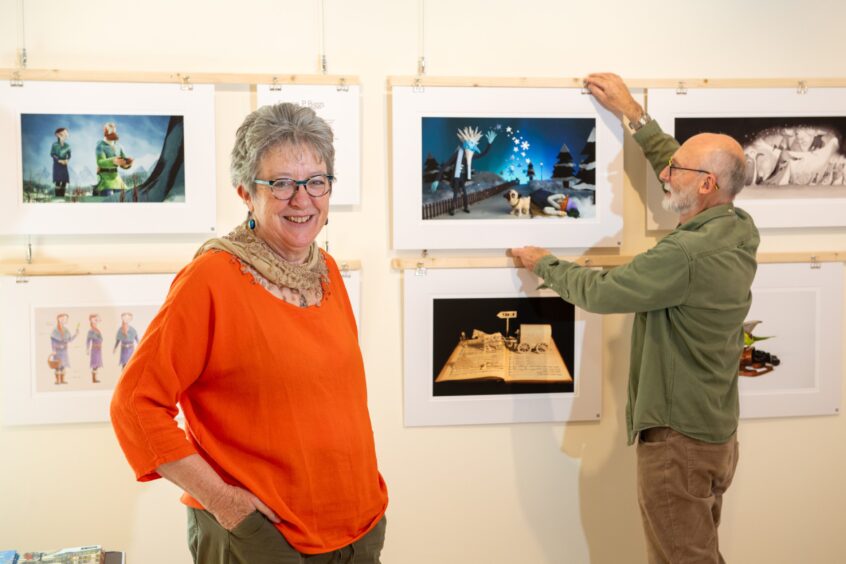
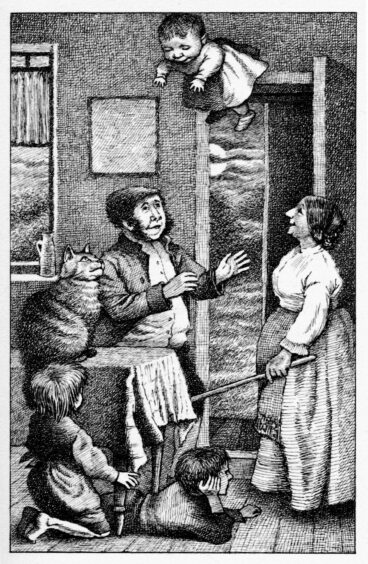
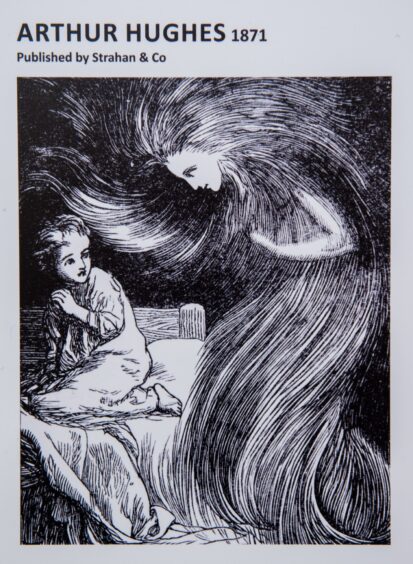
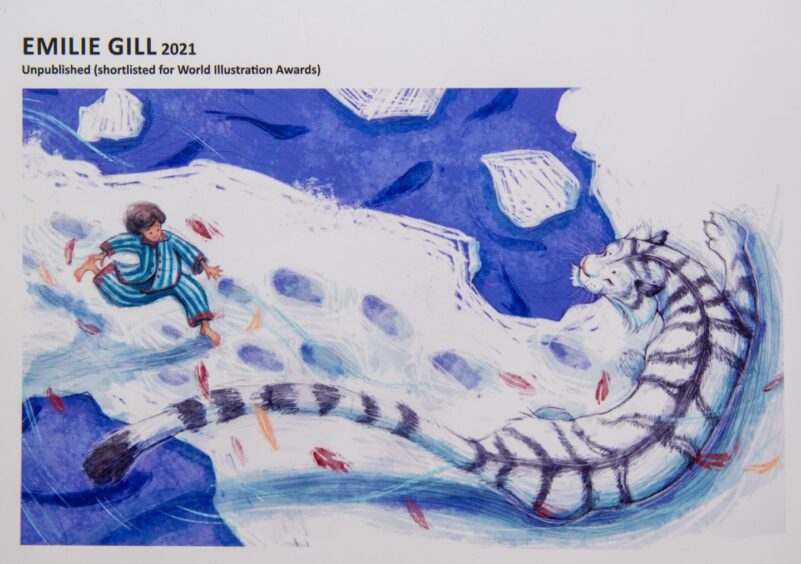
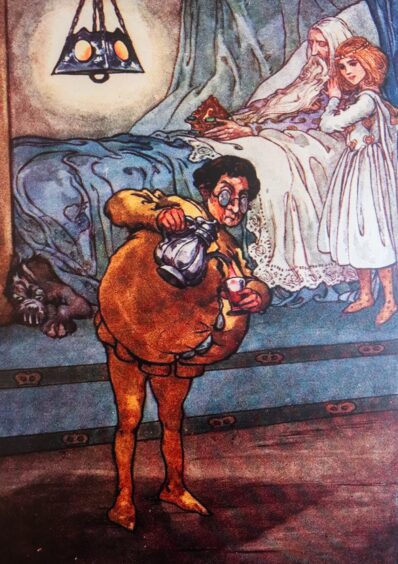
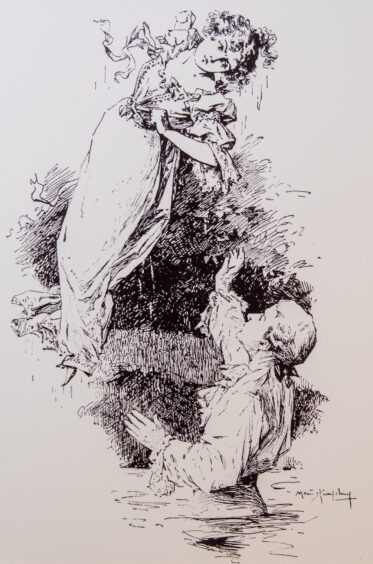
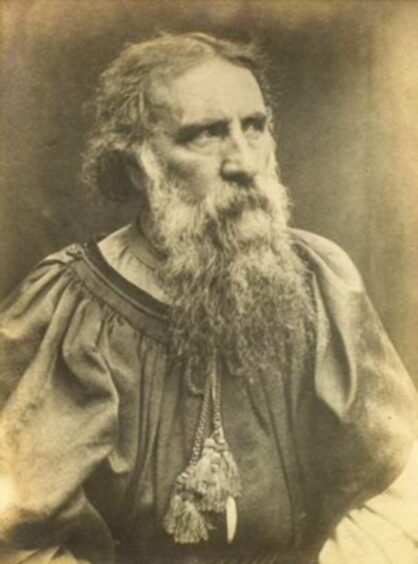
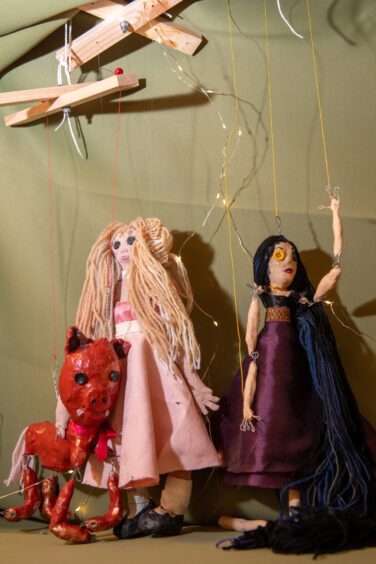
Conversation